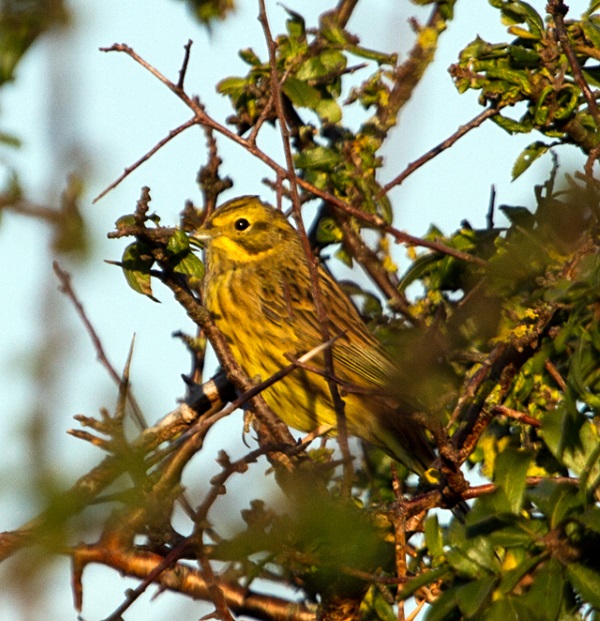Site menu:

October 2015 Newsletter
Wader Quest.
Colour Ring Report.
Wirral Wader Festival.
The Godwits of Gilroy - update.
September Bird News.
Forthcoming Events.
Latest Newsletter.
Wader Quest
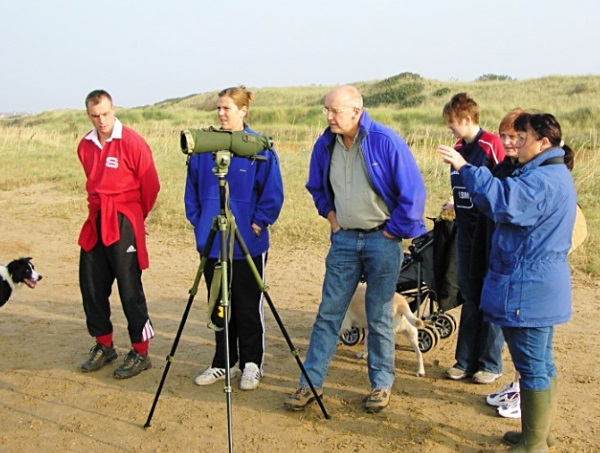
to local beach goers and dog walkers © Sheila Ryde.
Wader Quest
is a new charitable organisation
that is born of our passion for waders and dedicated to providing
assistance to Community Wader Conservation projects which are small and
locally organised. It is our belief that these small projects are of
vital importance in the conservation of waders as their cumulative
effect can be a significant positive force in the fight against
population decline and even extinction. The Dee Estuary Voluntary
Wardens organisation which relies on local volunteers
working in Wirral to raise awareness to provide some space for
the birds to thrive
is a very good example of this.

Wader Quest started as a
fund-raising exercise to raise money for the Spoon-billed Sandpiper
captive breeding programme at Slimbridge Wildfowl and
Wetlands Trust
and led to raising funds for another species, namely the Hooded Plover
in Australia. Part of this fund-raising project involved travelling
(self-funded) in search of waders across the world and as we did so we
witnessed first-hand many of the problems waders are facing leaving us
determined to do whatever we can to help them.
We are an
entirely voluntary organisation where no wages or expenses are paid to
staff or volunteers and income from sponsorship and donations is
ring-fenced to be used exclusively for wader conservation; the
organisation’s running costs are derived from sales and our mobile
charity shop.
We are aware that not everyone will be in a
position to have hands-on involvement in wader conservation however
much they care about the plight of these birds. With this in mind we
have a sponsorship scheme with categories from individual to corporate
so that those who wish to can still ‘do their bit’ through our projects.
Raising
awareness is equally important and to this end we give talks to groups,
clubs and societies about waders and their conservation, we attend bird
fairs and write copiously about waders on our own website and blog and
in many different places including social media and other web sites
such as the fantastic Dee
Estuary Birding site.
Across the
planet waders are celebrated with varying degrees of enthusiasm but
here in the UK we noticed that there were no festivals or events at all
so we decided that this needed addressing.
In 2014 we
carried out a successful World
Watch event where 118 species were seen
from all nine of the world’s flyways so this year we decided to enlarge
this idea and make November a month of events in celebration of these
birds in the UK and christened the idea Wader Conservation November.
The
World Watch
event has been renamed Wader
Conservation World Watch to
better reflect the connection with conservation and it will take place
on November 7th and 8th 2015. We ask people around the world
to go
out and look for waders wherever they may be and send us their
sightings so that we can compile a collective world list of species
seen. If you would like to be involved there is a Wader Conservation
World Watch at Burton Mere Wetlands, see details:
http://www.rspb.org.uk/discoverandenjoynature/seenature/events/details.aspx?id=tcm:9-405402
We also reached out to the Dee
Estuary Voluntary Wardens to
see if they would be interested in helping us set up the first UK wader
festival in Wirral. The response was immediate and
enthusiastic,
and Thurstaston Country Park Rangers, members of the Wirral Council,
Cheshire Wildlife Trust and the RSPB were also soon involved and a plan
was set in place; the
Wirral Wader Festival was born the first of its
kind in the UK, this will be held on November 14th and 15th.
The main event will take place at
Thurstaston Country Park with satellite events at New Brighton,
Hoylake, West Kirby / Red Rocks. Further details will be announced soon
but Wader Quest will be at Thurstaston Country Park for the weekend and
so we hope many of you will drop by and say hello, buy some of our
merchandising, maybe even join us or just have a chat about our
favourite subject; waders!
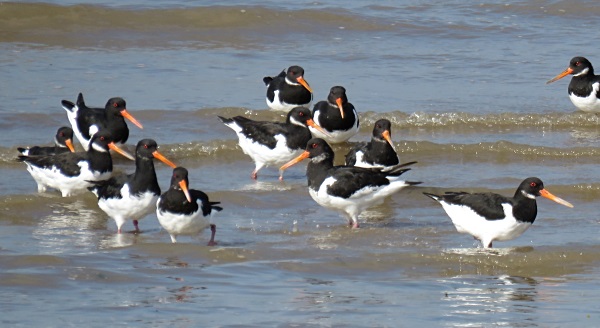
Further
Information:
1. Read all about Wader Quest on their website: www.waderquest.org/
2. If you want to know more
about the Dee Estuary Voluntary Wardens various articles have
been published on www.deeestuary.co.uk
over the years, including:
Dee Estuary
Voluntary Wardens and the West Kirby High Tide Roost.
3. If you are thinking of joining the Dee Estuary Voluntary Wardens or want to know more about them: ring Thurstaston Visitor Centre on (0151) 648 4371, or email: wcp@wirral.gov.uk.
4. WIRRAL
WADER FESTIVAL November 14th and 15th. Full details of all
events will be in the November Newsletter on www.deeestuary.co.uk
which will be published on November 1st. Also see
below.
Colour Ring Report
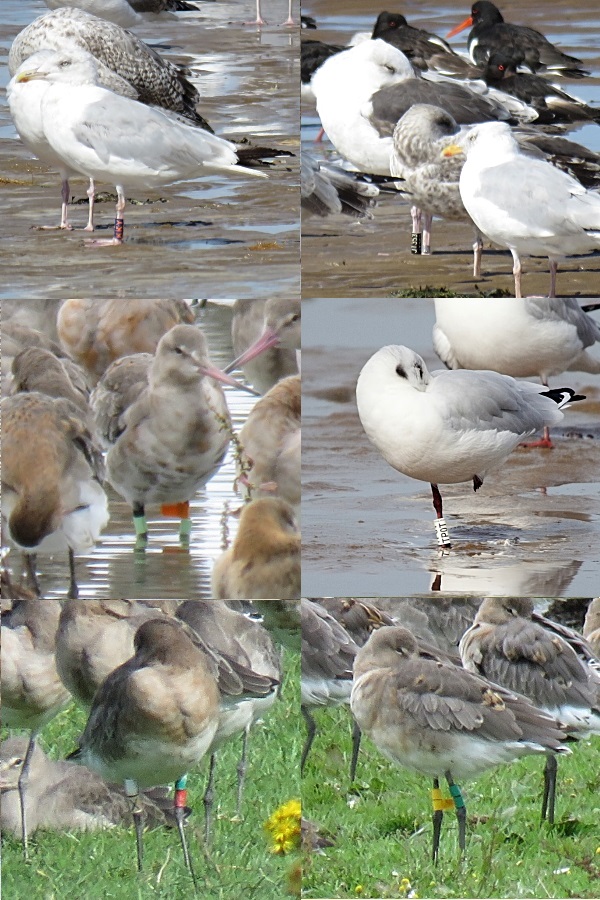
Wader numbers were low at Hoylake so we
weren't able to spot any ringed Dunlin or Sanderling during September,
unlike last year. However, there were plenty of gulls there and
elsewhere and since July we've logged four
colour-ringed
Great Black-backed Gulls, two Herring Gulls, one Common Gull and five
Black-headed Gulls; below we detail the life histories of of the three
photographed plus four others. As mentioned elsewhere in this
newsletter Internationally Important numbers of Black-tailed Godwits
continued to visit the small flooded field next to Gilroy Nature Park
in West Kirby and we managed to record 18 different colour-ringed birds
in September, below are details of the three photographed.
Herring Gulls
KKY orange letters on blue ring.Ringed as a three year old bird at Gloucester Landfill site on Nov 20th, 2010.
Recorded on Hoylake shore on Sep 1st 2015.
First recorded at Cardiff in July 2012 then at Hoylake shore in Nov 2014 and Jan 2015.
T:551 black letter/numbers on yellow ring.
Ringed as an adult male at Medicine Well, Montrose, on May 24th 2012.
Recorded on 'the Dips'. New Brighton, on Aug 18th 2015.
First recorded at Moore Nature Reserve (next to the Mersey estuary) on Jan 2013 followed by a sighting on Crosby Beach in Nov 2013. It was in a large gull roost on Richmond Bank, Mersey estuary, in Feb 2014.
Black-headed Gulls
J39E white letters/numbers on green ring.Ringed in Oslo on Apr 14th 2015.
Recorded on Hoylake shore on Aug 3rd and Sep 28th 2015.
It was recorded at, or near, the ringing site in Oslo seven times in Apr and May 2015.
TPOT black letters on white ring.
Ringed in Cedynia on the River Odra, Poland, on Jun 14th 2015.
Recorded at Hoylake shore on Sep 28th 2015.
5HP black letters/numbers on white ring.
Ringed in Copenhagen, Denmark, on Mar 29th 2015.
Recorded at New Brighton Marine Lake on Jul 23rd 2015.
E2VA black letters on white ring.
Ringed at Veluwemeer, Netherlands, on Jun 12th 2012.
Recorded at Heswall Shore on Jul 26th 2015.
Recorded a total of 16 times at the ringing site since the ringing date.
Great Black-backed Gull
J1353 white letters/numbers on black ring.Ringed as a chick at Tromso, Norway, on Jul 31st 2009.
Recorded at Hoylake shore on Sep 1st 2015. No other records.
Black-tailed Godwits
GG-YYflag ringed as a chick in southern Iceland on Jun 23rd 2013.Recorded at Gilroy on Aug 28th 2015 then almost daily up to the end of Sep, plus twice at Thurstaston shore.
First record after ringing was at Gilroy on Aug 11th 2014 and it stayed there until Oct 24th 2014. Since being ringed it has never been recorded away from Gilroy or Thurstaston.
GR-WX ringed as an adult in northern Iceland on Jul 11th 2009.
Recorded at Gilroy Nature Park, on Sep 1st and 2nd 2015.
This bird winters in Portugal, last recorded there in Feb 2014, and returns north via the Netherlands having been recorded there in March 2010, 2012 and 2013. Most years, after breeding, it passes through the Dee estuary having been seen at Talacre, Inner Marsh Farm, Caldy Shore and Thurstaston Shore as well as Gilroy. It's also been recorded on the Ouse Washes, Northumberland, Rutland Water and the Upper Forth in NE Scotland.
OflagL-NL ringed as an adult near La Rochelle, France, on Oct 29th 2008.
Recorded at Thurstaston shore on Sep 8th and 9th 2015 and at Gilroy on Sep 11th and 12th 2015.
There were three records near the ringing site in 2008, 2010 and 2014 and it wasn't recorded anywhere else until it turned up in the Netherlands in Apr 2015 when there were six records.
Richard Smith and Matt Thomas.
Colour-ringed birds were also recorded by Colin Schofield and Steve Hinde.
Top of Page
Wirral Wader Festival -
November 14th and 15th 2015
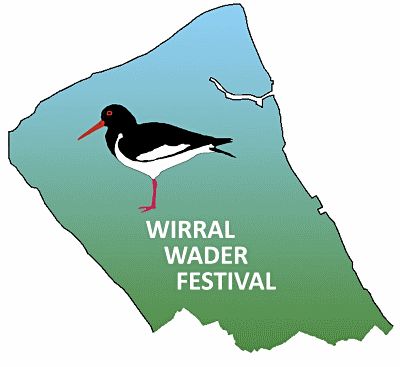
Here's a summary of what to expect:
High tide bird watches will be held at Hoylake, New Brighton and West Kirby.There will be a low tide bird watch
at Thurstaston led by Alan Davies and Ruth Miller of The Biggest Twitch.
Cheshire Wildlife Trust will lead a Wildlife
Walk at Red Rocks.
There will be a Dusk
Birdwatch at Parkgate where we should see Hen Harriers and
Short-eared Owls.
At Thurstaston Visitor Centre there will be a talk by Alan Davies and Ruth
Miller of The
Biggest Twitch plus a second-hand wildlife book sale,
optics for sale
and a Wader exhibit
from the Liverpool
Museum and British
Natural History Museum (London). Various other talks and
stalls are planned for Thurstaston.
The Godwits of Gilroy - update
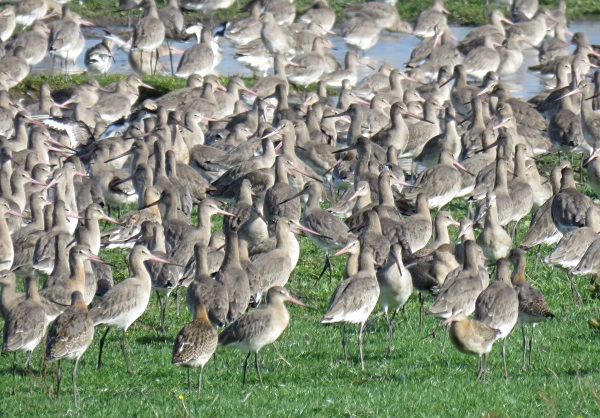
Note that the large majority of adults are now in non-breeding plumage, the three closest birds are juveniles which are also starting to moult into winter plumage.
For those wanting to see the original Godwits at Gilroy article published in September 2015 - Please click here.
Numbers of Black-tailed Godwits
remained high at the Godwit Gilroy field all September and since the
end of July they have been above the Internationally Important Number
threshold (610) nearly every day up to the end of September (when this
article was written). It was interesting just how much interest the
birds generated with a constant trickle of visiting birders
coming
to have a look at the spectacular sight and I had a constant stream of
questions from the general public who use the path, wanting to know
about the birds and why they were there.
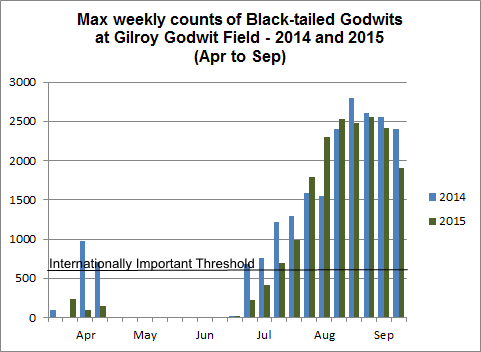
The graph above is a good comparison between the record breaking year of 2014 and this year. Numbers this year were much lower in spring, and after a late breeding season, due to bad weather in May, the birds were slower to return but during most of August and September the counts were nearly identical to 2014.
There are as yet no further details of the planned Hoylake Golf Resort so we don't know how much of a threat it will be to the Gilroy field. I have yet to meet or speak to anybody who is actually in favour of this development!
Richard Smith
September Bird News
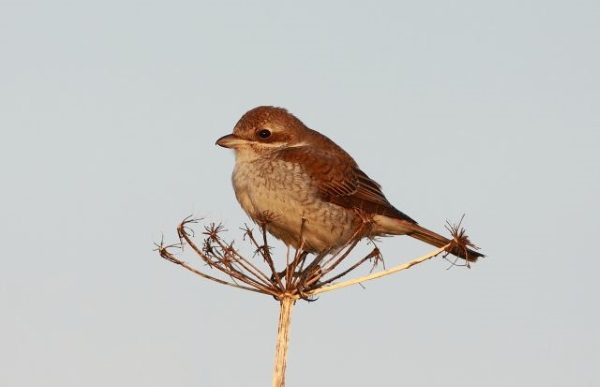
I've often talked about 'classic Septembers' in this Newsletter - well, this one was definitely not one! The weather was more like mid-summer and there were no gales, yet on the marshes, with plenty of Short-eared Owls and Hen Harriers around, it was more like mid-winter.
The month started well with a couple of nice rarities showing well as you can tell from the photos, a Red-backed Shrike along Park Lane, Meols, on the 4th and 5th and a Hoopoe by the railway between Wallasey and New Brighton on the 8th. At the end of the month there was a Pectoral Sandpiper at Burton Mere Wetlands.
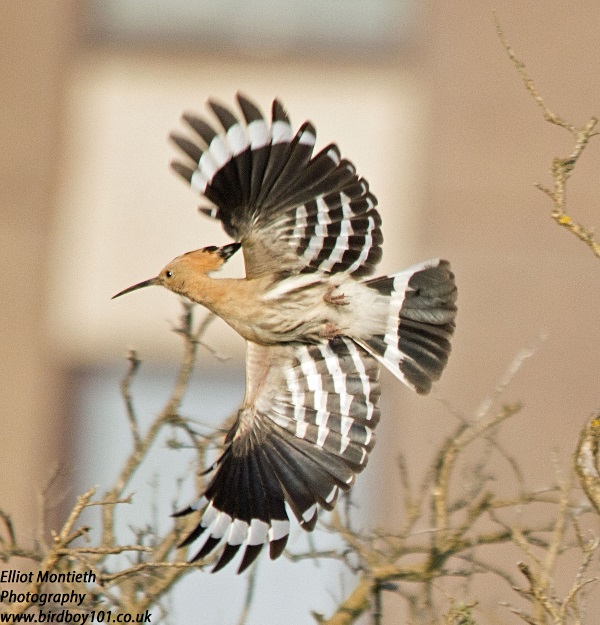
http://www.birdboy101.co.uk/
Although still very much a scarce bird, the Great White Egret is no longer regarded as a County Rarity on the Dee estuary but five on Parkgate Marsh on the 6th was unprecedented and was part of an influx into the north-west. Four were present the following day and there were several records of three together for the rest of the month. There were also three Spoonbills seen flying past Burton Mere Wetlands and a few reports of single birds - but always distant.
There were a total of 34 records (sum of daily totals) of Short-eared Owls during the month, with max of five on the 20th, these were mostly flying over Neston and Burton Marshes. This is a remarkable total, in 2013 and 2014 there wasn't single bird seen in September and the total for all of the previous three years (2010 to 2012) comes to just seven. It would be nice if they stayed for the winter.
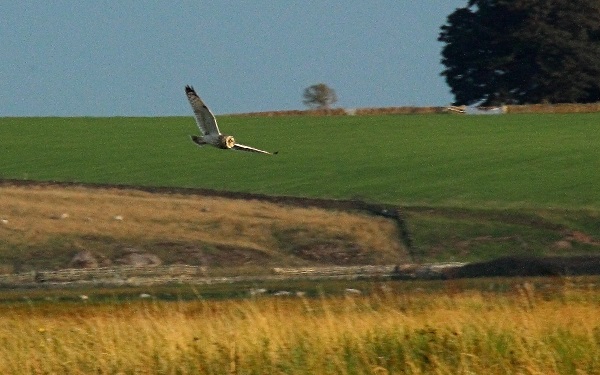
Marsh Harriers were reported throughout the month max three on the 1st and 20th, both juveniles and females were seen. A single ringtail Hen Harrier was reported on several dates with two on the 15th. There was just one Osprey (19th) but they are always rarer in autumn than spring. One or two Hobbies were recorded most days up until the 21st.

http://stevenround-birdphotography.com/
The Greenshank passage was steady if unspectacular with max counts of 15 at Parkgate on 20th and 17 at Connah's Quay on 25th. The same could be said of Ruff and there was a max count of 11 in a flooded field in Meols and 12 at Burton Mere Wetlands. Both Pink-footed and Brent Geese had arrived in small numbers by the end of the month, a definite sign of the coming winter.
Richard Smith.
What to expect in October
As well as gales October is known for it's Visible Migration, given the right conditions this can be quite spectacular with Redwings and Fieldfares arriving and large movements of Starlings and Chaffinches along with many other finches.
Our over-wintering waders should start to build up and we should see good numbers of Dunlin, Knot and Sanderling. There can be good numbers of birds on the sea and calm weather should reveal hundreds of Common Scoters and Great Crested Grebes, as well as tens of Red-throated Divers.
Geese numbers should increase rapidly through the month and there will be small parties of Pink-footed Geese overhead on their way from south Lancashire to the marsh off Parkgate. The Brent Geese around Hilbre could reach double-figures by the end of the month.
We often get some good rarities in October, may be a rare wader or a passerine moving through with the large finch flocks, keep your eyes peeled!
Top of Page
Forthcoming Events
October Highest Spring Tides (Liverpool)
Also
see Tides
page.
1st October, 14.02hrs (BST), 9.9m.
27th October, 10.00hrs (GMT), 9.9m.
28th October, 11.15hrs (GMT), 10.0m.
29th October, 11.58hrs (GMT), 10.0m.
Forthcoming Events
Organised by the Wirral
Ranger Service , Flintshire
Countryside Service and the
RSPB (Dee Estuary):
All these events and walks have bird interest, even those not
advertised specifically for birdwatching. No need to book for these
events unless specified - please check below.
Also see 2015 Events Diary.
1 pm - dusk
Price: Free
Most people have never seen a hen harrier, but once seen it is rarely forgotten. In support of the RSPB's Skydancer project, we are pleased to bring you a series of events to showcase these enigmatic birds of prey which use the marshes of the Dee Estuary as their home for the winter months.
The name "Skydancer" comes from the aerobatic displays that the male birds perform in their courtship ritual on the moors in the spring. Sadly, this has become an increasingly rare sight and they are close to becoming extinct as a breeding bird in England.
This could be the last chance to see Skydancers on the Dee, so come along to Parkgate to find out more about the hen harrier story and what you can do to help save them before it's too late. Look for the RSPB marquee along the main promenade at Parkgate, where friendly staff and volunteers will be on hand with telescopes and binoculars to show you these beautiful, agile birds hunting over the marsh, and coming in to roost there at dusk. Plenty of family activities and other RSPB information will be available.
Car parking is limited on Parkgate promenade, but there is free public parking at the Old Baths car park (CH64 6RN) at the north end of The Parade, and the Wirral Country Park car park on Station Road (CH64 6QJ). There are public toilets at Mostyn Square in the middle of The Parade, and a number of pubs and cafes for refreshments. Wrap up warm, and prepare to be patient as the harriers have a large area of marsh to roam!
For more information on the RSPB's Skydancer project, visit
http://www.rspb.org.uk/skydancer/
October 17th, Weekend Walkabout at
RSPB Burton Mere Wetlands.
1 pm-3 pm (approx. finish)
Price: Free (normal reserve entry charges apply to non-members)
Join one of our friendly, knowledgeable volunteers for a
gentle walk from the Reception Hide to the end of the Hillfort Trail on
Burton Point, to learn more about the wildlife that thrives here, the
work we do to give nature a home and the remarkable history of the
estuary
Great for first time visitors or those who'd like a guide to help them
get the most enjoyment from a visit. With constant changes as we move
through the seasons, it's impossible to predict what might be seen but
large numbers of herons and egrets, ducks and geese returning for the
winter are guaranteed at this time of year. With a variety of birds of
prey and some late butterflies and dragonflies if the sun is shining,
there's always something to marvel.
No booking required, just turn up on the day. A reasonable level of
fitness and sturdy footwear are required.
Wedenesday 28th October and Thursday 29th October, Parkgate High Tide Bird Watch.
The
marsh at Parkgate is one of the best wetland habitats in the northwest,
and when it is flooded by an incoming Spring high tide, the wildlife
which lives here is pushed closer, potentially delivering an
awe-inspiring spectacle. Join us at Parkgate's Old Baths car park and
the Donkey Stand near Nicholl's ice cream shop, where we'll be set up
with marquees and telescopes hoping for the right weather conditions to
really push the tide in.
You can expect great views of the large
numbers of wintering wildfowl and wading birds shifting around to avoid
the rising water, whilst the small mammals living on the marsh are
flushed from cover, offering a feeding frenzy for the resident kestrels
and hopefully harriers and short-eared owls returning for the winter.
Car
parking is limited on Parkgate promenade, but there is free public
parking at the Old Baths car park (CH64 6RN) at the north end of The
Parade, and the Wirral Country Park car park on Station Road (CH64
6QJ). There are public toilets at Mostyn Square in the middle of The
Parade, and a number of pubs and cafes for refreshments.
Additional parking has also kindly been offered at Marsh Nurseries,
Boathouse Lane (postcode CH64 6RD).
Please
note: the height of the tide can be hugely affected by the weather
conditions on the day. In the event of high pressure and calm
conditions, the tide will cover much less of the marsh and not reach
the sea wall, whilst low pressure and strong Westerly winds will help
push the tide in and offer the greatest spectacle. We recommend you
check the weather forecast on the day to know exactly what to expect.
High tide times:
Wednesday 28 October: 11.15 am (10.0m)
Thursday 29 October: 11.58 am (10.0m)
Saturday 7th November and Sunday 8th November
Wader Conservation World
Watch at Burton
Mere Wetlands.
9.30 am-4.30 pm.
Price: Free (normal entry fees apply to non-members)
Ever taken part in the RSPB's Big Garden Birdwatch? Well, our friends
at Wader Quest have created an annual, global event that is effectively
the same, but for wading birds rather than garden birds; the Wader
Conservation World Watch.
An opportunity for birdwatchers across the world to show their
solidarity with, and appreciation of, wader conservationists be they
professionals or volunteers, and just two simple steps to taking part:
1. Go out
and see wading birds wherever you are in the world.
2. Report
what you have seen and where to Wader Quest.
It is that easy; no registering required, just good old-fashioned
bird-watching!
Burton Mere Wetlands is playing "host" to this event on the Wirral
Peninsula; drop in any time during opening hours over the weekend to
report your sightings from any local location, and we'll submit them to
Wader Quest, credited to you of course!
We'll also be reporting all waders present at the reserve over the
weekend, so feel free to come down and help us seek out that elusive
greenshank or little stint, or who knows what other late migrant?!
Further details on the event, and Wader Quest's work, can be found on
the Wader Quest website, here: http://www.waderquest.org/p/wader-quest-world-watch.html
Wirral Wader Festival
Click here for more details.
